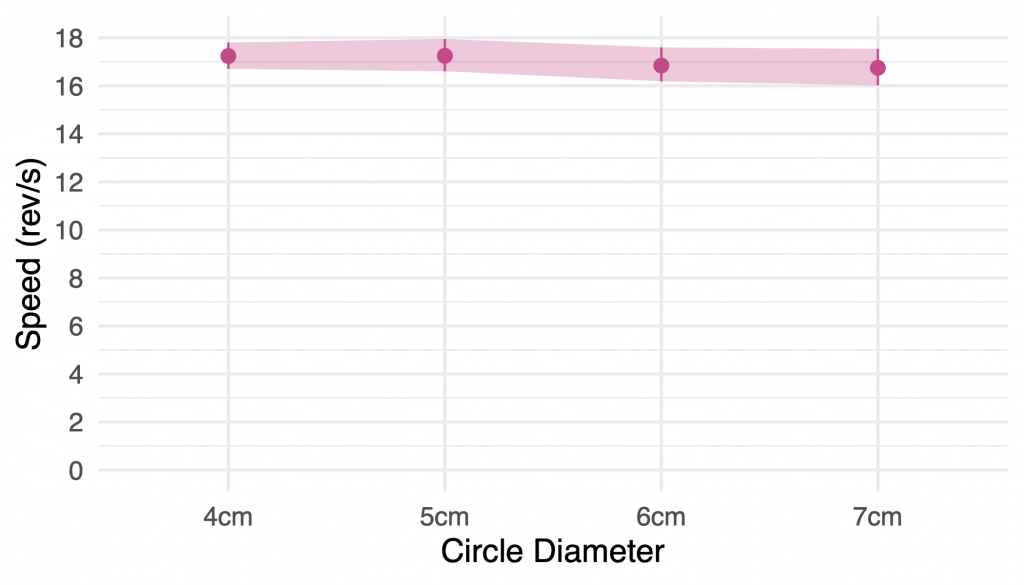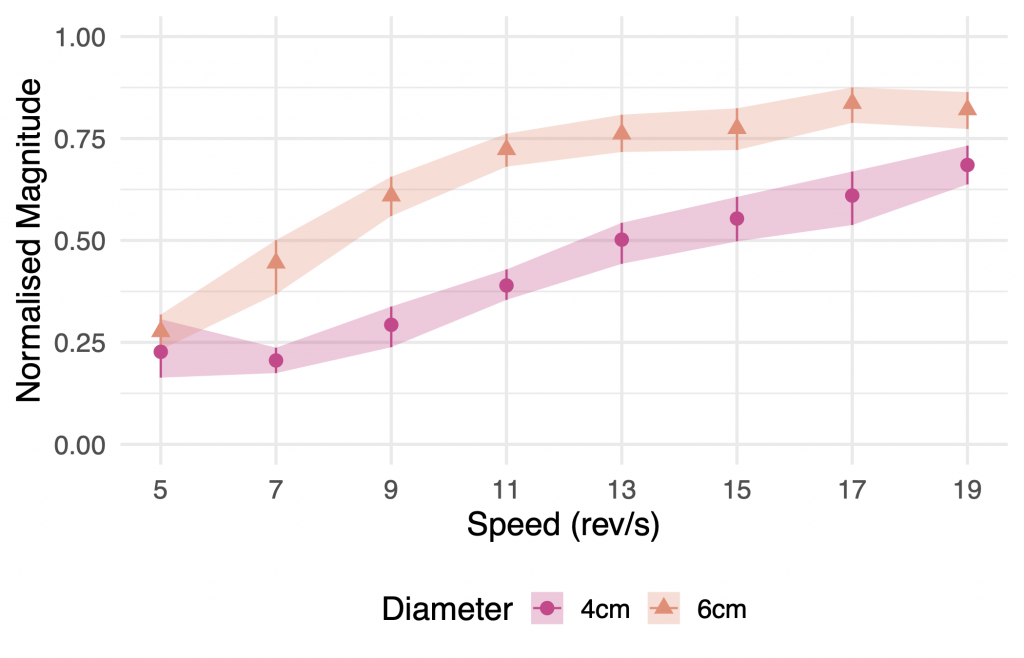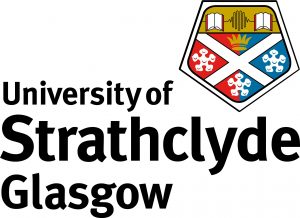Overview
Ultrasound haptic patterns can be rendered by continuously moving an ultrasonic focal point. It is not known how this focal point motion affects haptic perception. In a paper at the 2021 ACM International Conference on Multimodal Interaction, we describe two psychophysical experiments investigating the perception of an ultrasound haptic focal point moving along a circular path.

Our first experiment finds that a sensation of motion is perceived at speeds up to 17 revolutions per second (17 Hz rendering frequency), similar to the so-called ‘flutter’ sensation associated with low frequency vibrations and movements.

Our second experiment found a mostly linear relationship between movement speed and perceived intensity up to this speed.

Haptic circles are widely used in ultrasound haptic interfaces: e.g., for spherical virtual objects or to give feedback about mid-air gestures. Our results can inform the design of ultrasound haptic interfaces, so that designers can create or avoid the sensation of tactile motion. Motion may be desirable for dynamic feedback: e.g., using below the 17 revolutions per second threshold to create moving patterns to indicate changing values or to accompany animated visual icons. Conversely, designers may wish to emphasise the contiguous outline of a virtual shape by rendering significantly above 17 revolutions per second. Since perceived intensity scales with circle size and rendering frequency, our results can also be used to create perceptually similar haptic objects: i.e., balancing size and frequency to yield similar intensity.
Perception of Ultrasound Haptic Focal Point Motion
E. Freeman and G. Wilson.
In Proceedings of 23rd ACM International Conference on Multimodal Interaction – ICMI ’21, 697-701. 2021.
@inproceedings{ICMI2021Motion,
author = {Freeman, Euan and Wilson, Graham},
booktitle = {{Proceedings of 23rd ACM International Conference on Multimodal Interaction - ICMI '21}},
title = {{Perception of Ultrasound Haptic Focal Point Motion}},
year = {2021},
publisher = {ACM},
pages = {697--701},
doi = {10.1145/3462244.3479950},
url = {http://euanfreeman.co.uk/perception-of-ultrasound-haptic-focal-point-motion/},
pdf = {http://research.euanfreeman.co.uk/papers/ICMI_2021_Motion.pdf},
data = {https://zenodo.org/record/5142587},
}Acknowledgements
This research has received funding from the 🇪🇺 European Union’s Horizon 2020 research and innovation programme under grant agreement #737087. This work was completed as part of the Levitate project.

